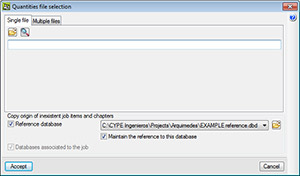
- MVC DATA ANNOTATIONS MIN CHAR LIMIT HOW TO
- MVC DATA ANNOTATIONS MIN CHAR LIMIT CODE
- MVC DATA ANNOTATIONS MIN CHAR LIMIT DOWNLOAD
If the app was built with enable, a missing value for Name in a JSON or form post results in a validation error.

Consider the following code: public class Person By enabling Nullable contexts, MVC implicitly starts validating non-nullable properties or parameters as if they had been attributed with the attribute. The validation system treats non-nullable parameters or bound properties as if they had a attribute. Non-nullable reference types and attribute (new NewtonsoftJsonValidationMetadataProvider()) įor an example of the policy to use camel-casing, see Program.cs on GitHub.
MVC DATA ANNOTATIONS MIN CHAR LIMIT CODE
The following code configures validation to use the NewtonsoftJsonValidationMetadataProvider to use JSON property name when using Json.NET: using (new SystemTextJsonValidationMetadataProvider()) Var builder = WebApplication.CreateBuilder(args) ī(options => The following code configures validation to use the SystemTextJsonValidationMetadataProvider to use JSON property names: using .Metadata Some apps, such as single page apps, benefit from using JSON property names for validation errors generated from Web APIs. Use JSON property names in validation errorsīy default, when a validation error occurs, model validation produces a ModelStateDictionary with the property name as the error key. To find out which parameters are passed to String.Format for a particular attribute's error message, see the DataAnnotations source code. When applied to a Name property, the error message created by the preceding code would be "Name length must be between 6 and 8.". Not shown is, which shows an alternative way to implement a custom attribute. The attribute is a custom validation attribute and the others are built in. The following example from the sample app shows a model class that is annotated with validation attributes. Validation attributes let you specify validation rules for model properties. If (!TryValidateModel(Movie, nameof(Movie))) ModelState.ClearValidationState(nameof(Movie)) To rerun validation, call ModelStateDictionary.ClearValidationState to clear validation specific to the model being validated followed by TryValidateModel: public async Task OnPostTryValidateAsync() For example, you might compute a value for a property and want to rerun validation after setting the property to the computed value. Validation is automatic, but you might want to repeat it manually. For more information, see Automatic HTTP 400 responses. In that case, an automatic HTTP 400 response containing error details is returned when model state is invalid. Web API controllers don't have to check ModelState.IsValid if they have the attribute.


MVC DATA ANNOTATIONS MIN CHAR LIMIT HOW TO
Web apps typically redisplay the page with an error message, as shown in the following Razor Pages example: public async Task OnPostAsync()įor ASP.NET Core MVC with controllers and views, the following example shows how to check ModelState.IsValid inside of a controller action: public async Task Create(Movie movie) For web apps, it's the app's responsibility to inspect ModelState.IsValid and react appropriately. For example, a 0 is entered in a field that expects a rating between 1 and 5.īoth model binding and model validation occur before the execution of a controller action or a Razor Pages handler method. Model validation occurs after model binding and reports errors where data doesn't conform to business rules. For example, an "x" is entered in an integer field. Errors that originate from model binding are generally data conversion errors. Model state represents errors that come from two subsystems: model binding and model validation.
MVC DATA ANNOTATIONS MIN CHAR LIMIT DOWNLOAD
View or download sample code ( how to download). This article explains how to validate user input in an ASP.NET Core MVC or Razor Pages app.


 0 kommentar(er)
0 kommentar(er)
